Ultimate guide to electric vertical takeoff and landing (eVTOL) air taxis
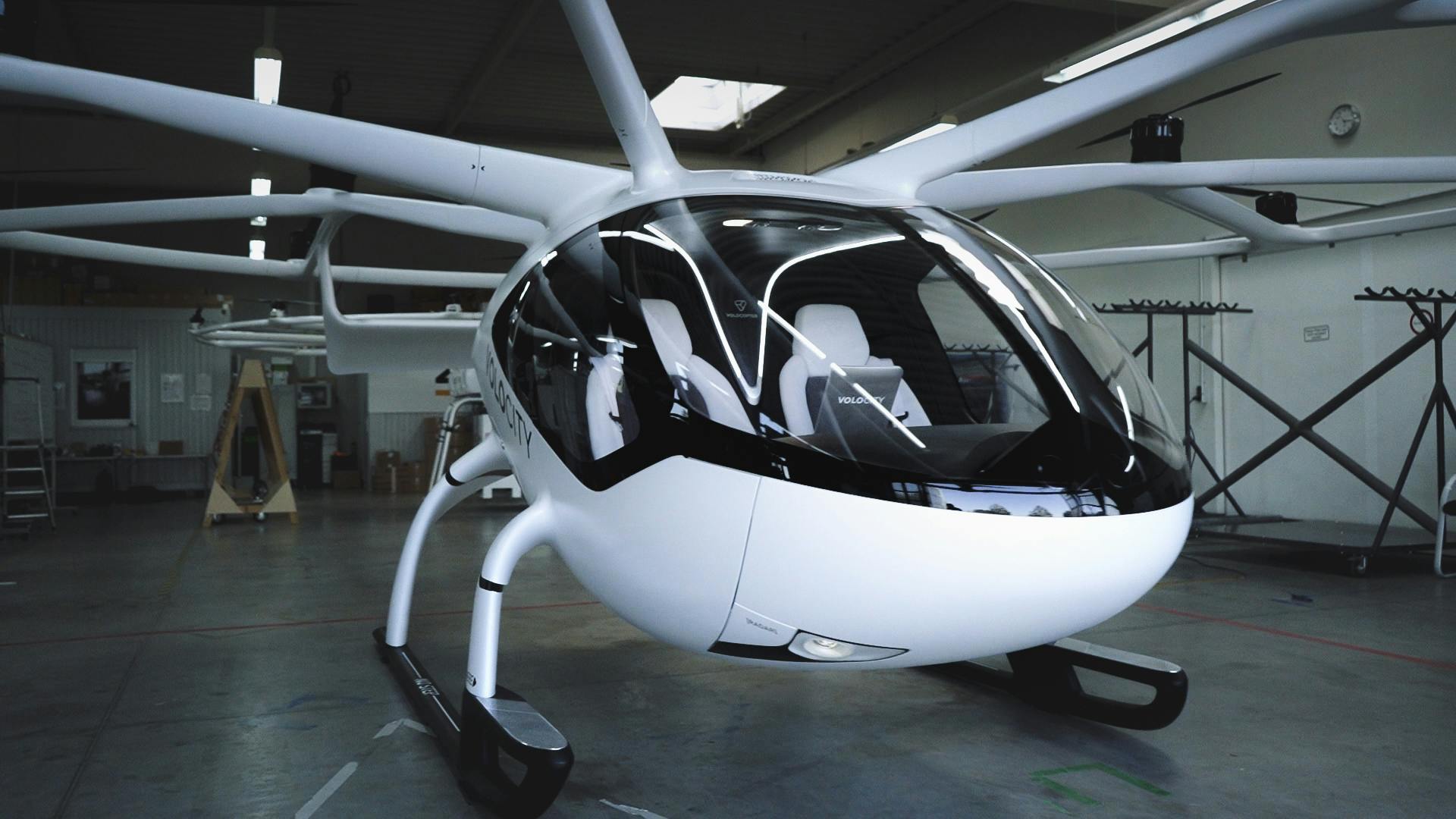
Blog
Ever try to actually hail a cab? Or order a taxi for a scheduled pickup? It’s a pain, even in cities like New York, Paris, or London where taxis and public transportation are the primary way people like to get around.
The now-cliche bad taxi experience (language warning) is one of the primary reasons rideshare companies like Uber and Lyft have taken the world by storm. They reduce or eliminate the hassle of hailing, scheduling, riding in, and paying for traditional taxis. Well, get ready for another sea change in the world of personal-transport-for-hire: eVTOLs.
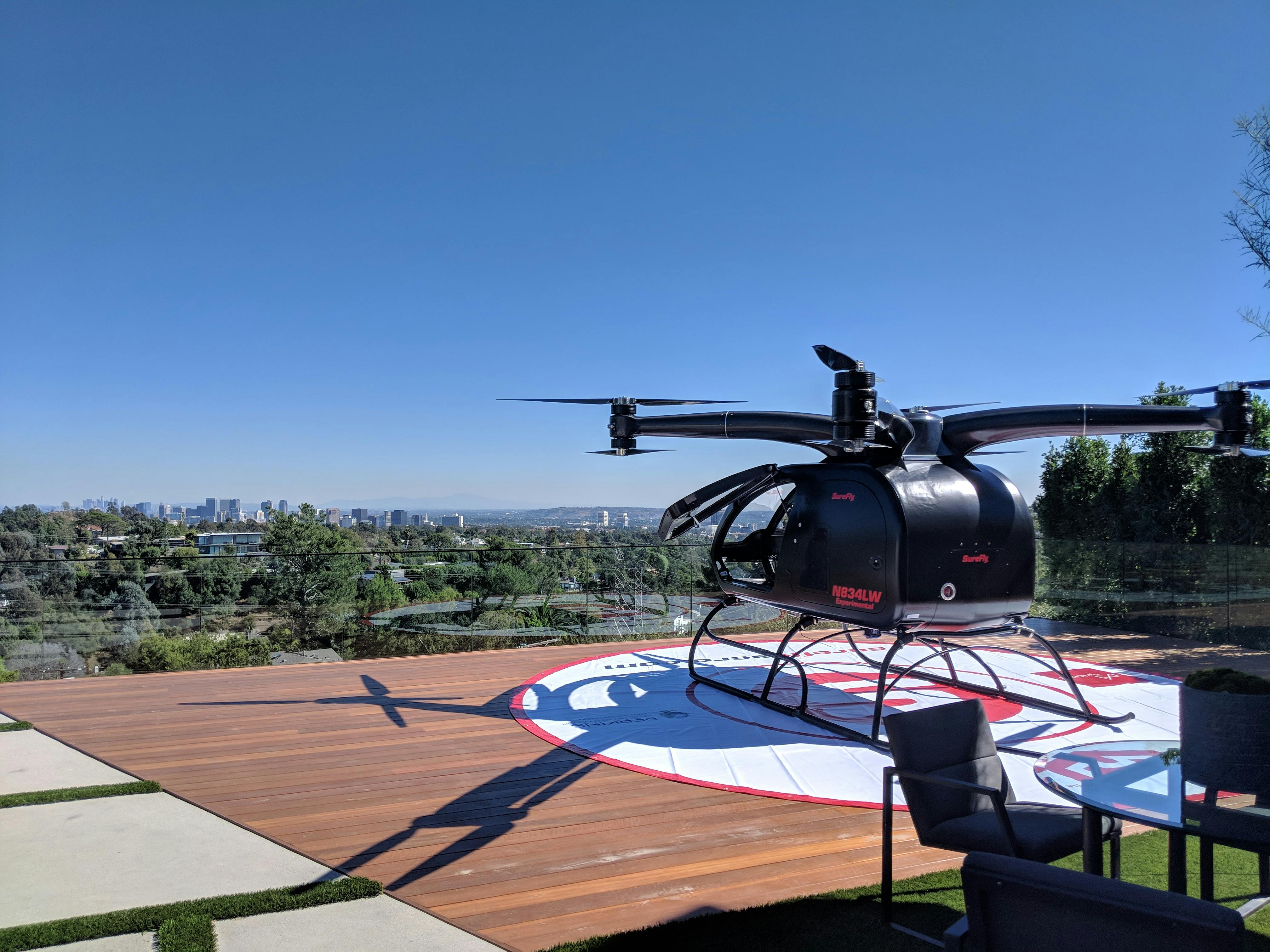
What is an eVTOL, and what does eVTOL stand for?
EVTOL stands for Electric Vertical Take-Off and Landing vehicle, and these new aircraft designs are instrumental in a new movement toward Advanced Air Mobility (AAM), and/or Urban Air Mobility (UAM). AAM is the concept and development of infrastructure for a safe, automated air transportation system for passengers and cargo in urban and rural locations. UAM is a subset of AAM and focuses on lower-altitude operations within urban and suburban areas.
An eVTOL, for the purposes of today’s discussion, is essentially a personalized helicopter taxi for one or more passengers, but potentially much quieter, less polluting, hopefully safer, cheaper, and (this is key) potentially fully automated, making it ideal for daily commutes and intra-city travel. Eventually. There are still some pretty serious bugs to work out, as we’ll discuss below.
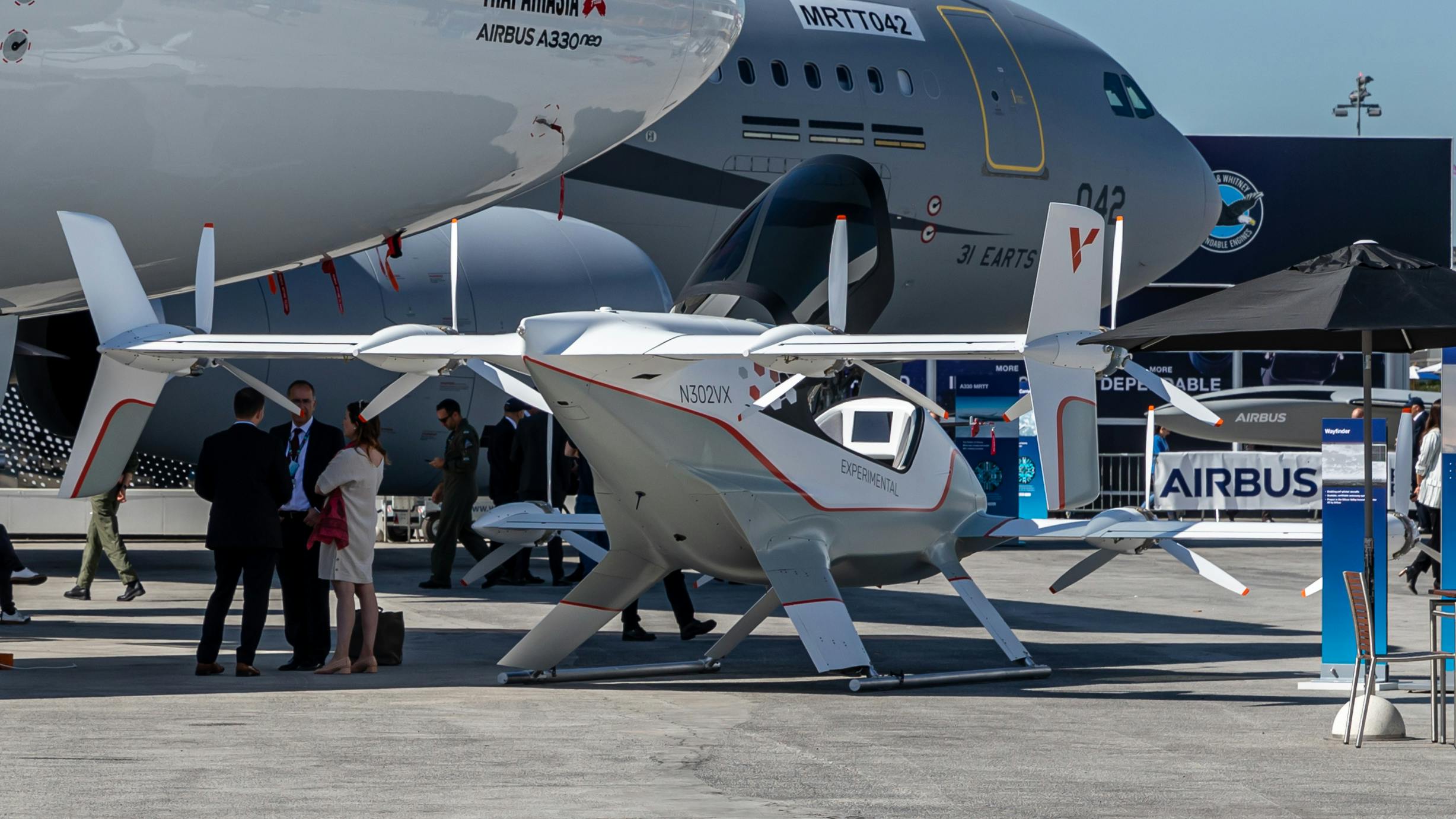
What are the leading manufacturers and designs for eVTOLs currently?
The “tube and wing” configuration for traditional aircraft (airplanes) was pretty much standardized in the early 20th century and hasn’t really changed all that much since. But eVTOLs open up an exciting new world of possibilities.
The purpose of the eVTOL is fundamentally different from, say, a modern passenger airliner. Projected travel distances are much shorter. Passenger numbers may range from up to 9 to as few as 1, if the designs we’ve seen are to be believed. Since most prototypes are fully electric, engineers don’t have to account for large or bulky amounts of fuel. And, since directionally vectoring/rotating lift fans or propellers are the norm, traditional wings aren’t required for lift.
This arena is a veritable playground for aircraft and aerospace geeks, and we’re excited to see which companies break out of the pack and reward their investors with profits and their passengers with safe, convenient travel.
Let’s have a look at some of the current players:
Vertical Aerospace
Vertical swears their (admittedly kinda badass-looking) 5-passenger VX4 fully electric eVTOL is “Faster, quieter, greener, cheaper… With speeds over 200mph, near silent when in flight, zero emissions and low cost per passenger mile, the VX4 is going to open up urban air mobility to a whole range of passengers and transform how we travel.”
Cool story, and we’re hoping every word comes true. The (comparatively large) aircraft resembles an updated version of Airwolf, but with a large main wing including 4 rotating lifter/puller fans, two rear lifter fans, and a huge V tail. Add some frickin’ lasers and it’s ready for the next James Cameron movie.
In September 2022, Vertical Aerospace first flew its full-scale demonstrator model, the VX4. The eVTOL briefly took off over the ground with a pilot at the controls. The aircraft was tethered to the tarmac for safety, but exciting progress is being made.
Volocopter
Volocopter says Paris has chosen it as its UAM partner and “testing is underway.” Their fully electric VeloCity 2-seat, autonomous air taxi resembles a pod with a circular frame network above, supporting multiple electric props.
Volocopter emphasizes their creation of an entire UAM ecosystem, confidently touting that “very soon, you’ll be able to book a flight in one of our VoloCitys on your phone, jump on board at one of our VoloPorts, and arrive at your destination in minutes – with no emissions to speak of. Meanwhile, the VoloIQ will act as the control tower for our urban air mobility ecosystem, ensuring a seamless experience. And our VoloDrones will deliver your bulky cargo while you sit back and enjoy the breathtaking city views. Sounds good, right?”
In October 2022, Velocopter conducted the first crewed eVTOL test flights in Italian airspace, when a test pilot performed a five minute demo flight with Volocopter’s eVTOL, flying it up to 40 meters above ground level. Volocopter also flew its demonstrator unit at the 2023 Paris Air Show in advance of flying select routes during the 2023 Paris Olympics.
Joby Aviation
Joby is taking a somewhat “interesting” tack on the eVTOL concept, at least in their marketing approach. Flying in their 6-fan, fully electric, 4-passenger (plus one pilot) design aims to “feel more like getting into an SUV than boarding a plane.” Americans raised in Chevy Suburbans and Ford Expeditions should feel right at home.
One thing we are fully onboard with is Joby’s commitment to keeping it quiet. “Quiet as a conversation,” they say. According to Joby, Guy Norris from Aviation Week reported that “The aircraft made only a partially perceptible sound that, in this editor's view, would almost certainly be undetectable against the everyday noise background of an urban environment.”
Joby has led out on a multi-year testing program with the FAA to certify their eVTOL for commercial operations and in May 2022 received Part 135 certification from the FAA.
Joby has flown both scale and full-sized remote-piloted flight demonstrators, and plans to operate demonstration electric air taxi flights in and around the Expo 2025 Osaka Japan site in 2025.
Eve
Owned and operated by Brazilian airframer Embraer, Eve is planning to initially launch their fully-electric eVTOL as a fairly conventional-looking (in this new space, at least), helicopter-esque design, which they say will be “initially piloted” but “ready for autonomous flight.” We think that’s probably a good call.
Eve emphasizes the “people’s eVTOL” aspect of the 8-lifter-prop, 2-pusher-fan concept (“Design for all,” Easy access for everyone,” etc.) and points out their 4-passenger eVTOL aircraft interior will accommodate wheelchair users, visually impaired users, etc. With investors around the world throwing fat stacks of money at multiple eVTOL startups, it’s important to differentiate. We’ll see if Eve’s volksflyer strategy helps them make it off the ground.
Eve has flown scale flight demonstrator models but remains tight-lipped on plans for a full-scale demonstrator. The company is aiming for a 2026 date for full-scale operations.
Lilium
Lilium’s entry into the eVTOL sector is “first electric vertical take-off and landing jet.” If you just did a double-take when reading that, so did we. Electric jet engines? How does that work?
Basically, Lilium’s “e-jet engine” is a “single stage” rotor/stator system driven by an electric motor, or “Ducted Electric Vectored Thrust (DEVT).” So, multiple, super-high-speed electric fans housed in the “flaps” of the eVTOL’s 4 wings, which can be rotated down for vertical takeoff and landing. And it does sound like a (somewhat quieter) jet.
The Lilium eVTOL has room in its interior cabin for a premium 4-seat, economic 6-seat, or cargo-carrying layout.They’ve been refining this design since 2015. Check out Lilium’s flight test video.
Lilium says their eVTOL is currently in Type Certification with both the FAA and the EASA (European Union Aviation Safety Agency).
On June 26, 2023, Lilium announced that it has received the Federal Aviation Administration (FAA) G-1 Certification Basis necessary for type certificate validation of its Lilium Jet by the FAA. The company says this makes Lilium the only eVTOL manufacturer with both EASA and FAA certification basis for a powered-lift eVTOL aircraft. The FAA G-1 award is a critical milestone in the FAA cross-validation process, establishing airworthiness and environmental requirements necessary to achieve FAA Type Certificate Validation. Lilium remains on track in its plan for achieving Type Certification with EASA by late 2025.
Kittyhawk
Per the company’s website, “Kittyhawk is building a single-person, remotely-piloted electric aircraft with the goal of making airtaxis affordable, ubiquitous and eco-conscious.”
Founded by self-driving car pioneer Sebastian Thrun and backed by Google co-founder Larry Page, Kittyhawk is one of the pioneers in the eVTOL world, with flying prototypes in the air since 2010. They say they are currently flight testing three days a week, and their “current R&D aircraft, called H2, has flown a hundred miles on a single charge and up to 180 mph.”
They don’t say whether that hundred miles included the weight of a passenger or not, but they reveal that they are “now working on our next-gen product for commercial launch.”
Update: Kittyhawk was shut down in October 2022.
Archer Aviation
Archer’s fully electric eVTOL design is called “Maker,” which earned them a $10M pre-delivery payment from United Airlines for 100 eVTOL aircraft. The company's Maker (technology demonstrator) and Midnight (prototype) aircraft have a strong resemblance to Vertical’s helicopter-with-a-wing concept, but Archer apparently is doubling down on more-is-better, with 6 rotating lifter/puller props and 6 lifter props.
Archer, founded in 2018, is a relative newcomer to this vertical (see what we did there?), but they have ambitious goals, shooting for a 2024 deadline for achieving Type Certification on their production aircraft from the FAA, and receiving Part 135 certification with the FAA, which will allow for the commencement of commercial business operations.
In September 2021 Archer announced that the FAA has approved and signed a G-1 Issue Paper: Certification Basis (“G-1 Certification Basis”) for Archer, enabling the company to move further down the runway (see what we did there?) towards its goal of obtaining an FAA Type Certification for its eVTOL aircraft. For more info on this G1 stepping stone, please see the FAA certification timeline section below.
AIR
The imaginatively named AIR is an Israeli eVTOL development company based in Pardes Hanna, Israel. Unlike some other eVTOL companies that are based only on intellectual property at this point, AIR has built a flying demonstrator of its eVTOL. The AIR ONE is a fixed-wing eVTOL technology demonstrator aircraft that holds two passengers. Both passengers have access to the aircraft’s controls. The AIR ONE is powered by eight electric motors driving eight pairs of rotors to achieve a max speed of 155 mph (249 kph) and a max range of 110 miles (177 km). The relatively impressive range (within this market) of the AIR ONE is credited in part to the lightness of the aircraft: the wings and rotors of the current version of the AIR ONE do not tilt, and the absence of machinery needed to tilt the wings reduces the weight.
In December 2022, AIR announced that the AIR ONE had completed its first transition from VTOL to forward flight, and was loaded to its full capacity of 2,425 lb (1,100 kg). In a statement, the company said that the flight is the start of a comprehensive test campaign as part of its certification process with the FAA, which it hopes to complete in 2023.
Beta Technologies
Beta, a Vermont-based company, has developed a pair of (we think) super-cool transformer-style designs for aircraft that use the same fuselage, wings, and rear-drive prop layout, but one is an airplane and one is an eVTOL. The CX300 airplane variant has no lift propellers (but retains the longitudinal, wing-mounted booms) and is intended for airport-to-airport runs where longer range is necessary. Beta’s ALIA-250 is essentially the same aircraft, but with the addition of four lift rotors at the front and back of the booms, enabling VTOL capability and the transportation of up to 5 passengers plus the pilot.
From what we can tell, Beta has flying demonstrator aircraft of both types. The “airplane” version CX300 recently flew 876 miles from Plattsburgh, New York to UPS Worldport in Louisville, Kentucky, charging its all-electric battery packs on its own infrastructure along the way. And videos on the Beta website show the eVTOL version ALIA-250 hovering with a pilot in place. We think this company has the potential for very efficient use of resources since both of its main platforms utilize identical airframes. Pretty sweet!
Supernal
Supernal has connections with Hyundai Motor Group’s impressive manufacturing capabilities, which always helps a startup. Supernal is saying all the right things, pimping its “people first” services for everyone, “not just the privileged few,” and “at a reasonable cost.” They aim to reduce noise pollution, put safety first, and basically change the world. Sounds great, though of course all of those “reasonable cost” and “affordable” terms are relative. The company has big visions for integration with ground structures and transportation systems, saying, “Through a network of connected ground hubs called vertiports, passengers will board eVTOLs and be flown to their next destination.” Supernal expects to begin service in 2028.
EHang
EHang is a Chinese “AAV” (Autonomous Aerial Vehicle) company and is not shy about going full-auto. Their design doesn’t even provide space for a human pilot. EHang says, “The technology of autonomous flight eliminates the possibility of failure or malfunction caused by man-made errors. Without any concern about controlling or operating the aircraft, the passengers can just sit and enjoy the journey. Flight routes will be surveyed in advance to preset multiple feasible plans for the user. EHang AAV uses 4G/5G as the high-speed wireless transmission channel to communication (sic) smoothly with the command-and-control center, thus enabling remote control of the aircraft and real-time transmission of flight data.”
Lest you think that no rational human being on the planet would currently be willing to put his or her life in the hands of a robot, in February 2023, EHang’s EH216 passenger-grade AAV completed its first passenger-carrying autonomous flight demonstration in Japan, carrying two passengers (sans pilot) along the coastline near Oita. This also marked the first passenger-carrying flight for an autonomous eVTOL aircraft in Japan.
Ascendance
Ascendance is working on a nifty fixed-dual-wing VTOL 4-passenger transport with front and rear push/pull drive props and integrated lift fans in the wings, all powered by a hybrid propulsion system utilizing both 21st-century battery technology and 19th-century kerosene. They say it reduces emissions by 80% and cuts noise by 4X. “The integration of the vertical rotors in the wings with a disruptive duct shape and powered by our hybrid-electric propulsion system brings a drastic improvement in the noise signature of our aircraft with 4 times less noise emissions than a helicopter. This noise reduction unlocks an entire new range of missions with flights closer to cities and in environments that were previously inaccessible due to noise constraints.”
We like this. Ostensibly this hybrid propulsion system will allow a much greater range than UAVs or eVTOL taxis, with a claimed range of over 400 kilometers and a turnaround time of only 10 minutes.
Wisk
Wisk says their mission is to provide safe, everyday flight for everyone, and is one of the companies focusing on self-flying, or autonomous eVTOLs or air taxis. Wisk is proud to have Boeing as a strategic partner, and currently boasts the largest fleet of flying, experimental/demonstrator eVTOL designs, generally featuring a streamlined main cabin with a push propeller, and up to 12 lift propellers mounted on spars along the two fixed wings. The lift motors provide the VTOL capabilities, and then the fixed wings combined with the main drive prop allow horizontal flight. It’s not the coolest-looking aircraft, compared to some of the other computer-enhanced images or prototype illustrations from other companies, but several of these Wisk air taxi prototypes are actually undergoing flight testing, which quickly silences most critics.
Wisk’s Generation 6 air taxi (which hasn’t flown yet) is a pilotless 4-seat design that the company says will be capable of flying 90 miles (with reserves) at between 2,500 and 4,000 feet above ground level and at a cruising speed of 120 knots (138 mph). The company emphasizes that it has fewer moving parts, no hydraulics, and no oil, which they say reduces the chances of a component failure and creates a more robust system overall. While the air taxi will be pilotless, Wisk will have humans monitoring each flight from a control center.
Wisk says, “We are excited about the progress we are making on our previously submitted Type Certification application, and on our G-1 and G-2 issue papers.”
AutoFlight
AutoFlight is a Shanghai-based tech startup with a flight certification and R&D center in Germany. Current plans are for a piloted, 4-passenger eVTOL capable of a 250-kilometer range and a hovering decibel (dB) level of 65 (which would rule if they can pull it off). AutoFlight’s prototype/demonstrator aircraft has successfully completed a flight transition test (from hovering/vertical flight to forward/horizontal flight and back) as well as set a world record for the longest eVTOL flight without refueling/recharging at 250.3 km in February 2023.
AutoFlight aims for EASA (European) flight certification in 2025.
Overair
Overair is a relatively young, California-based AAM startup founded in 2018, but it has connections with proven systems such as the articulating, large-prop transitional engines used on the US Department of Defense’s Future Vertical Lift program designs. Overair’s Butterfly eVTOL concept is a 5-seat, dual-fixed-wing design with four large lift/drive propellers that transition from vertical to horizontal orientation, similar to the US military’s V-22 Osprey. This approach eliminates the need for using both lift fans/props as well as push/pull props, but of course requires the added complication of moving/transitional motor cowlings and propellers. To us it looks like an elegant, possibly valuable tradeoff.
The company has successfully flown reduced-scale demonstrator aircraft but the full-scale Butterfly hasn’t yet taken wing. Overair aims for a 100+ mile range, 200 mph cruise speed, and a super-quiet 40dB noise level. Here’s hoping they can pull it off!
Elroy Air
Elroy Air has chosen to focus on a slightly different market than eVTOL taxis at this point, instead aiming to enable same-day shipping to every person on the planet. In an autonomous eVTOL system without provision for any passengers, you can add impressive cargo-carrying capabilities for commercial, consumer, humanitarian, or military supply/shipping purposes. The company’s latest aircraft design, the Chaparral C1, will be capable of carrying 300-500 pounds of cargo over a 300-mile range with its hybrid-electric motors driving 8 lift fans and 4 drive propellers, all mounted to a single wing.
Elroy Air says, “The Chaparral is the flying part of an integrated, high-throughput autonomous aerial logistics system. The vehicle can land, deposit cargo, pick up another load, and take off again, all in just a few minutes and without operator interaction. The Chaparral is designed to carry cargo in lightweight, aerodynamic pods which are pre-loaded by ground personnel, and picked up autonomously by the aircraft before takeoff.”
Elroy Air has teamed up with FedEx to experiment on ways to solve the “middle-mile” problem for cargo delivery. We’ll have to wait and see if daily Elroy Air cargo deliveries become commonplace in the near future, as there hasn't been any significant news from the company since early 2022.
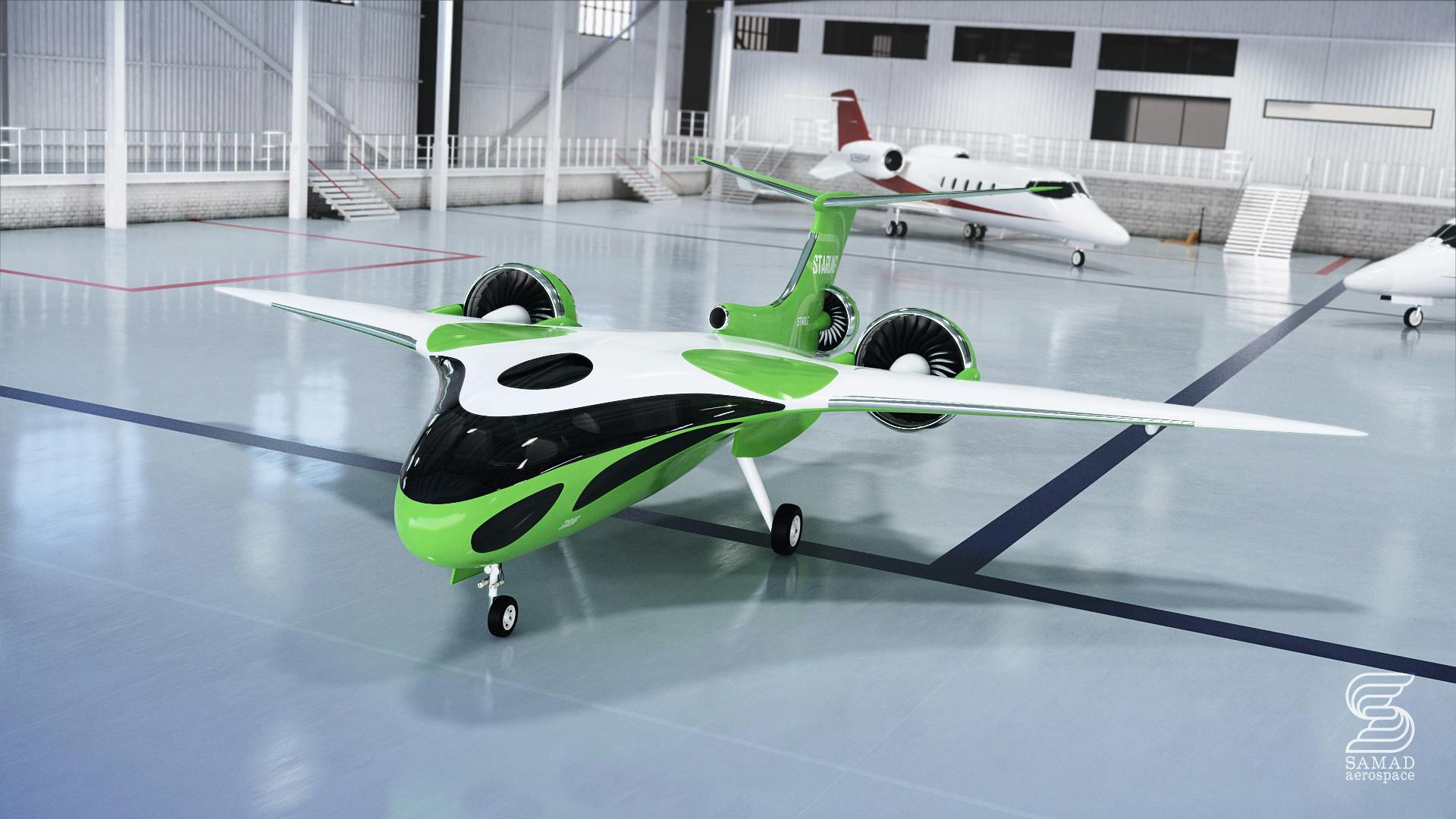
What’s the expected value of the eVTOL/UAM market?
It’s easy to get excited about urban air taxis swiftly carrying business executives to meetings, or eVTOLs carrying vacationers to previously inaccessible locations, but is this electric air taxi thing really going to happen? Well, it’s clear from the dozens of eVTOL startups and the literally billions invested by major industry players that UAM is actually going to be a thing, and eVTOL taxis and cargo systems may be up and running sooner than you might think.
Morgan Stanley has adjusted its latest projections for the value of the eVTOL/UAM market to be $1 trillion (yes, that’s trillion with a T) by 2040, and $9 trillion by 2050. So, yeah… not exactly chump change.
So… are eVTOLs safe?
If you read the press kits of the various companies hoping to cash in on the coming eVTOL craze, they’re safe as houses. However, Bloomberg is just one source reporting multiple crashes, fires, and glitches of eVTOLs.
Bloomberg says, “One prototype air taxi suffered a software glitch, lost control and nosed into a field. Another’s computer erroneously thought it was on the ground, shutting off power in flight and plunging it onto the pavement. Batteries on two more burst into flames.” Sounds like a thermal management problem, so you know we’re all over it.
And the problems aren’t limited to the tiny, silicon-valley startups with no flight experience. Biggies like Boeing and Bell Helicopter have had eVTOL accidents during testing, according to a Bloomberg review of reports dating back to 2018.
“No one has died or been injured, and advocates say accidents are a healthy sign that the industry is pushing the envelope. But the new electric-powered… eVTOLs use innovative technologies that haven’t been tested in routine service, and some safety experts say this means the road to government approval and public acceptance won’t be easy.”
While internal combustion engined (ICE) and jet-powered VTOL aircraft have been in military service for decades, the new eVTOL designs have naturally been experiencing teething problems. One reason is the perceived need for “low or zero-emissions” powerplants. There are hybrid-electric, fully electric, and potentially even hydrogen fuel-cell designs, but the frontrunners are basically all powered by lithium batteries.
As we’ve seen in land-based Electric Vehicles (EVs) like Tesla, weight is a constant issue. We’ve come a long way in the design of higher-output, longer-lasting battery packs for EVs, but compared to traditional ICE designs, EVs still need to be far heavier in an apples-to-apples comparison of power, range, and “refuel” time.
However, as we mentioned above, eVTOLs aren’t intended for long-range transportation, and ostensibly any eVTOL company would have enough air taxis in its fleet to maintain a perpetual supply of fully charged (or fueled, depending on the powerplant) birds so refuel/recharge time per unit wouldn’t be an issue.
Additionally, since projected trips would ostensibly be a few miles, or within a set radius of major cities (at least at first), an eVTOL wouldn’t need to have the 300+ mile range of a modern ICE automobile.
However, the electronic systems and battery packs being developed for eVTOLs have to stand up to a bit more rigor than ground-based EVs. After all, in a Prius hybrid, you have the benefit of an ICE engine to extend range. And if you run a Tesla’s battery completely dead, you simply coast to a stop—you don’t drop out of the sky to your death.
As noted above, the lithium batteries used by most eVTOL designs have burst into flames on several occasions in test flights (as well as in ground-based EVs). This is certainly not self-immolation in response to a customer refusing to pay the fare, like the auto-taxi Johnny Cab, but it also doesn’t necessarily instill a lot of consumer confidence, either. Thankfully eVTOL makers are working with at least one of your favorite thermal management innovators to deal with these heat problems.
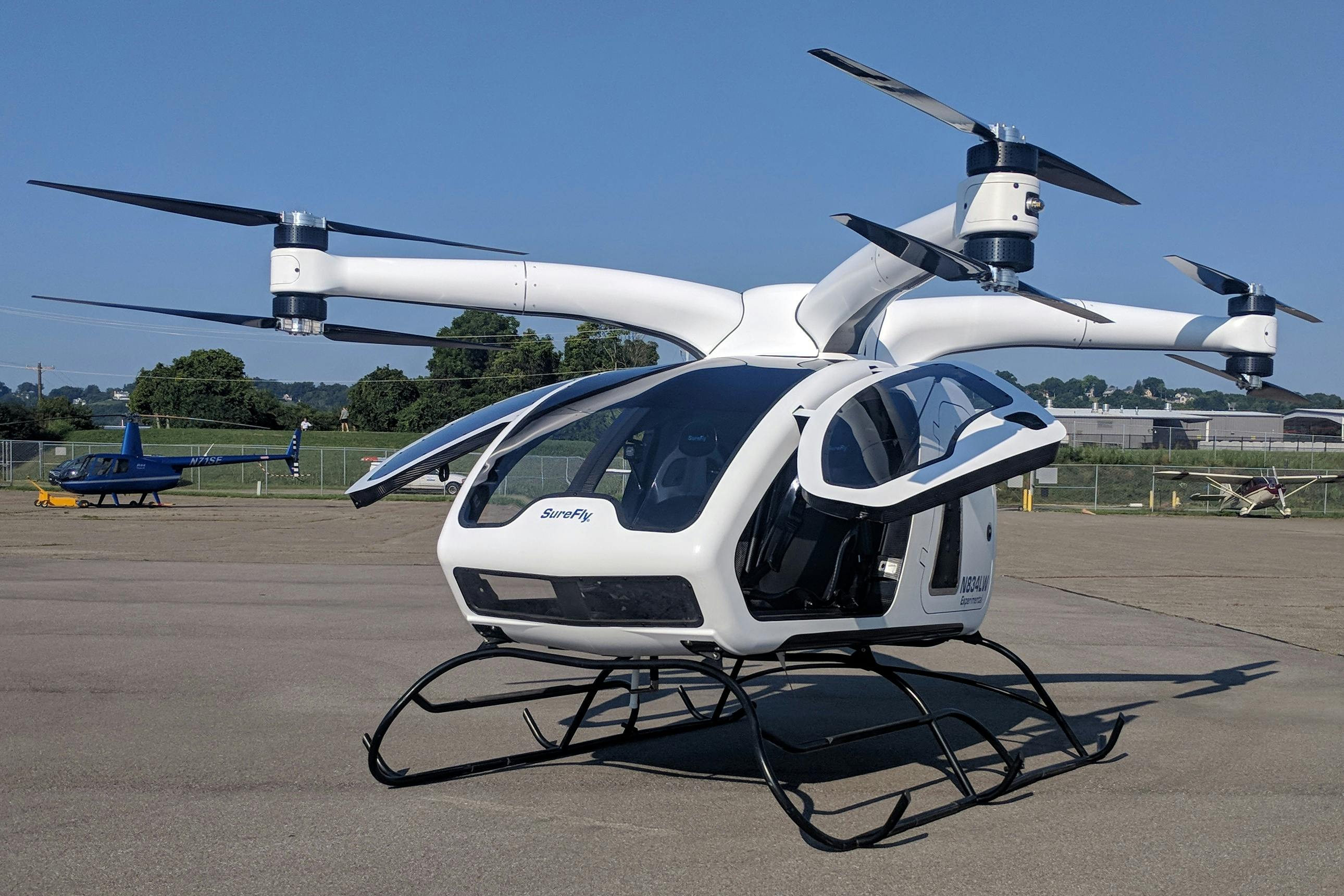
What’s the timeline for FAA certification for eVTOL aircraft?
Government wheels grind slowly, but it’s clear that the eVTOL market is a growing factor in future aviation strategies, regulatory matters, and urban planning. A watershed decision for the eVTOL industry was made in mid-2022 when the FAA decided “not to apply Part 23 regulations for small fixed-wing aircraft as previously planned. Instead, it will certify eVTOLs as ‘power-lift’ conveyance as stipulated in federal aviation regulation in 21.17(b). That special class is situated somewhere between light passenger planes and helicopters – which, to be fair, is pretty much how next-generation air taxis and UAM craft will be operating,” reports DroneDJ.
Crucially, on June 26, 2023, the FAA released a comprehensive Special Federal Aviation Regulation proposal for eVTOL pilot training and operational rules for powered-lift aircraft, previously termed the PL-SFAR. This rule was teased near the end of 2022, and its announcement is huge news for the industry.
The FAA says, “The powered-lift proposed rule is designed to provide certainty to pilots and the industry on what the requirements and expectations will be to operate these aircraft once it is finalized. Under the proposed rule:
- A clear pathway is proposed for pilots to earn powered-lift ratings specific to each type of aircraft they fly.
- Pilots who work for powered-lift aircraft manufacturers could serve as the initial cadre of flight instructors, who could then train instructors at flight schools, training centers and air carriers.
- To safely accelerate pilot certification, alternate eligibility criteria would enable certain pilots to meet flight-time experience requirements faster. This would apply to pilots who already hold a commercial pilot certificate and are instrument rated.
- Powered-lift aircraft would follow the same set of operating rules as traditional aircraft that are used in private and commercial flights and air tours.
The proposal would conform to International Civil Aviation Organization requirements, enabling US pilots to operate in other countries.”
Individuals can comment on the proposed rule for 60 days after it is published in the Federal Register.
This progress is exciting, and follows on the heels of the FAA’s recently updated recommendations for urban airspace design and procedures. In May 2023, the FAA released an updated blueprint for airspace and procedure changes to accommodate future air taxis. We’re hoping these recommendations help prevent air taxi accidents in congested cities, as personal transportation transitions from ground-based to airborne options.
As far as a certification timeline, we mentioned above that in June 2023 Lilium received the FAA’s G-1 Certification Basis necessary for type certificate validation of its Lilium Jet, and Archer received its FAA G-1 letter in September 2021. It’s important to understand that a “G-1 Issue Paper” from the FAA doesn’t mean an aircraft is certified for private or commercial flight, but rather it officially establishes the airworthiness and environmental requirements necessary to achieve eventual FAA Type Certification. Meeting those requirements is now up to the eVTOL makers and engineers. It’s an important milestone, but we’re not quite there yet.
Bloomberg reports the FAA “is preparing to certify a handful of the new aircraft to carry people as soon as 2024.” Aviation Week confirms, “Both Archer Aviation and Joby Aviation are targeting FAA certification of their eVTOL air taxis by the end of 2024, although Joby has acknowledged its schedule is tight. Both companies plan to begin commercial air taxi operations in 2025, based on FAA reassurances that PL-SFAR will be finalized by the end of 2024.”
The FAA has always been (understandably) rigid about type certifications for new designs. Safety is always paramount. Hopefully the future of personalized transport lives up to the hype, and we can see the projected 2024 full FAA certification for at least one or two eVTOLs or UAMs come to fruition.
You’ll note that the FAA’s proposed rules prominently feature pilot training rules and eligibility, and there’s a conspicuous absence of recommendations or paths to approval for unpiloted, passenger-carrying eVTOLs. In our view, full US regulatory approval of unpiloted transport craft is not even on the horizon yet, regardless of whether or not Americans are ready to put their lives into the hands of an automated or even remote-piloted airborne taxicab.
–By Jeff Davis, Intergalactic Scribe
Sources:
https://dronedj.com/2022/05/20/faa-changes-to-evtol-certification-spook-air-taxi-developers/
https://observer.com/2022/06/air-taxi-evtol-joby-archer-progress/